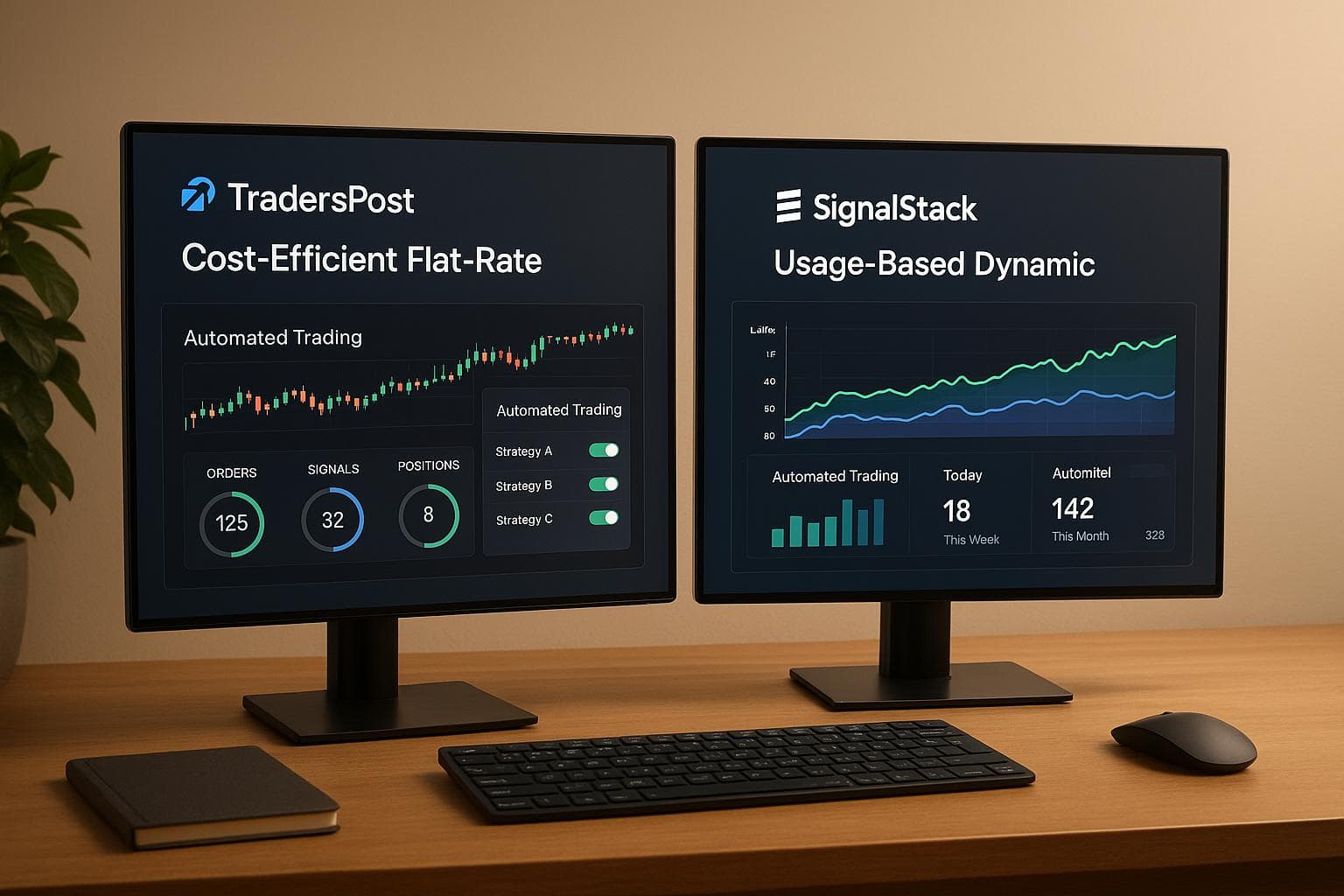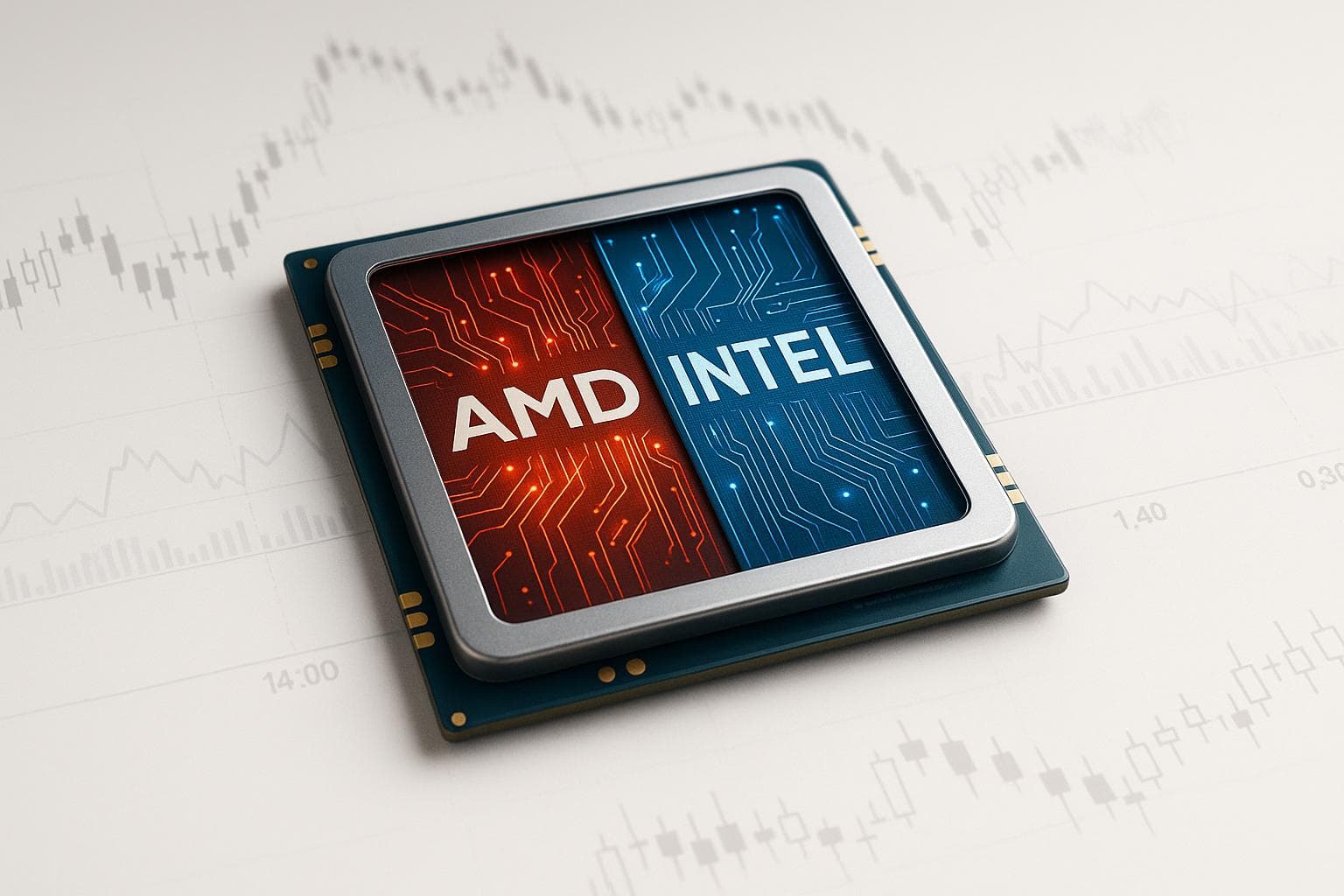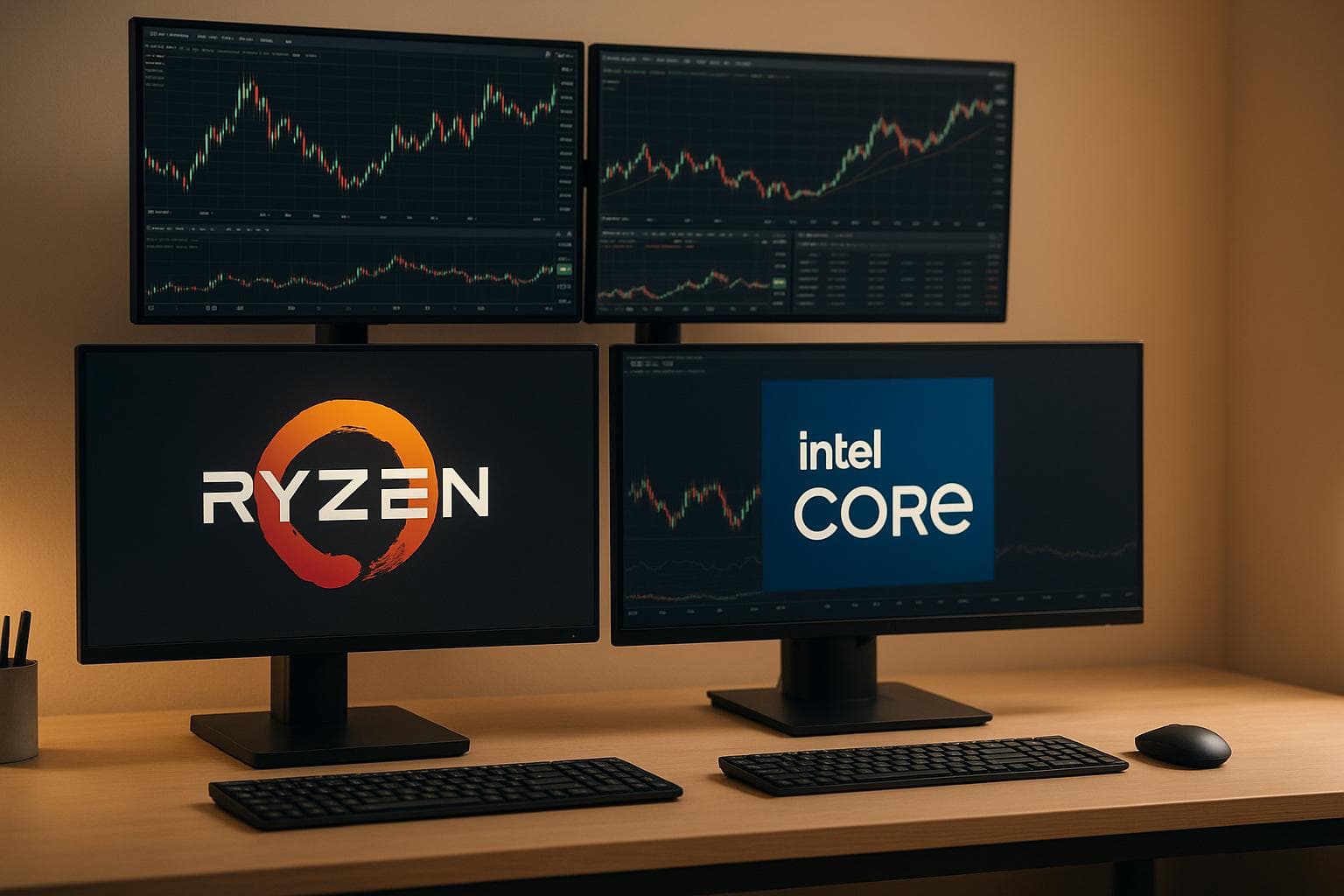In 2025, web-based futures trading platforms are essential for traders looking for speed, flexibility, and advanced tools. The right broker can make a huge difference in execution, risk management, and overall trading experience. Here are the top platforms:
- NinjaTrader: Offers cloud-based trading with low commissions starting at $0.09 per contract, advanced charting tools, and seamless multi-device sync.
- Interactive Brokers (IBKR): Known for global market access, tiered pricing as low as $0.25 per contract, and professional-grade tools like Trader Workstation.
- TradeStation: Features advanced tools like EasyLanguage® for strategy automation, historical data for backtesting, and a $0 commission model with low per-contract fees.
- Webull: User-friendly and affordable, with micro futures priced at $0.25 per contract and a strong mobile platform.
- AMP Futures: Provides access to over 50 platforms, with commissions starting at $0.25 per contract and no inactivity fees.
Each platform caters to different trader needs, from beginners to professionals. Below is a quick comparison of their features and pricing.
Quick Comparison
| Broker | Commissions (per contract) | Key Features | Best For |
|---|---|---|---|
| NinjaTrader | $0.09–$3.50 | Advanced charting, low margins, multi-device sync | Day traders, strategists |
| Interactive Brokers | $0.25–$0.85 | Global access, low margin rates, APIs | Professionals, global traders |
| TradeStation | $0.50–$1.50 | EasyLanguage®, historical data, advanced tools | Algorithmic traders |
| Webull | $0.25–$1.25 | Low fees, mobile-friendly | Beginners, cost-conscious traders |
| AMP Futures | $0.25+ | 50+ platforms, no inactivity fees | Platform variety seekers |
Choose a platform based on your trading style, budget, and technical needs.
Best Futures Trading Platforms | My Top 3 For Day Traders
1. NinjaTrader
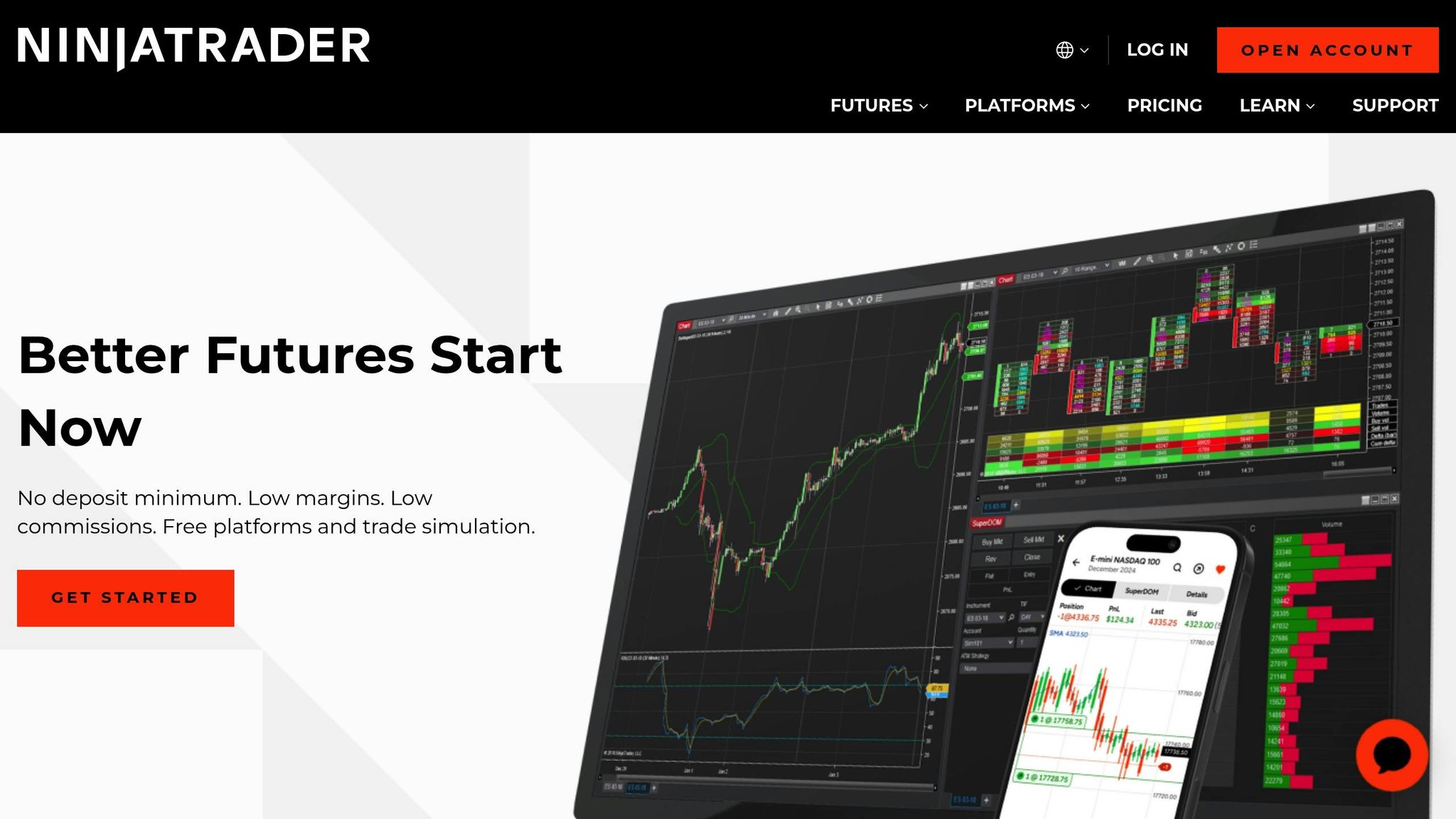
NinjaTrader is a cloud-based platform tailored for futures trading, with a community of over 1.9 million users worldwide. Recognized as the #1 rated futures broker, it also earned the 2024 Stocks & Commodities Readers’ Choice Award for Best Trading Software. Its browser-based design eliminates downloads while offering professional-grade tools – meeting the demands of speed, flexibility, and real-time market oversight that active futures traders rely on.
Platform Performance
NinjaTrader Web delivers smooth and efficient performance through its modular, cloud-based system. This setup ensures seamless syncing across devices and allows traders to customize workspace modules such as charts, DOM (Depth of Market), quote boards, and order windows. These configurations are preserved when switching between desktop, web, and mobile platforms.
The platform offers real-time features like live account management, instant profit and loss updates, and margin reports. This ensures traders have immediate access to crucial data in fast-paced markets. Its web-based interface also allows users to trade from any computer with internet access, providing the mobility modern traders need.
In 2025, NinjaTrader expanded its ecosystem by launching a mobile app with improved charting features and a sleek interface. These updates enhance the platform’s multi-device functionality and strengthen its standing among advanced trading tools.
Trading Tools
NinjaTrader’s advanced charting tools include depth-of-market features through its SuperDOM system, reliable quote systems, and the ability to execute trades directly from charts. This direct approach helps traders act quickly during critical market movements.
The platform also supports automation and strategy development. Using its C#-based framework, traders can create custom indicators and automated strategies. To ensure these strategies are effective, the platform offers backtesting with historical data and a simulated trading environment for risk-free testing.
For deeper market insights, tools like volumetric bars and cumulative delta provide detailed order flow analysis. Advanced trade management features, including automated stop orders and trailing stops, help traders manage risk and secure profits without constant manual input.
"NinjaTrader delivers integrated multi-device trading using a cloud-based technology designed for active futures traders. Take control of your trading journey and trade how you want, where you want."
Fee Structures
NinjaTrader’s pricing is designed to be accessible for traders of all experience levels. Commissions start as low as $0.09 per contract. With intraday margins beginning at just $50, traders can enter the futures market without needing a large upfront investment.
Hardware Integration
The platform’s browser-based design ensures smooth performance on standard hardware, while the desktop version supports multi-monitor setups and adapts to various screen configurations. NinjaTrader’s modular workspace delivers the advanced functionality required by active futures traders.
2. Interactive Brokers
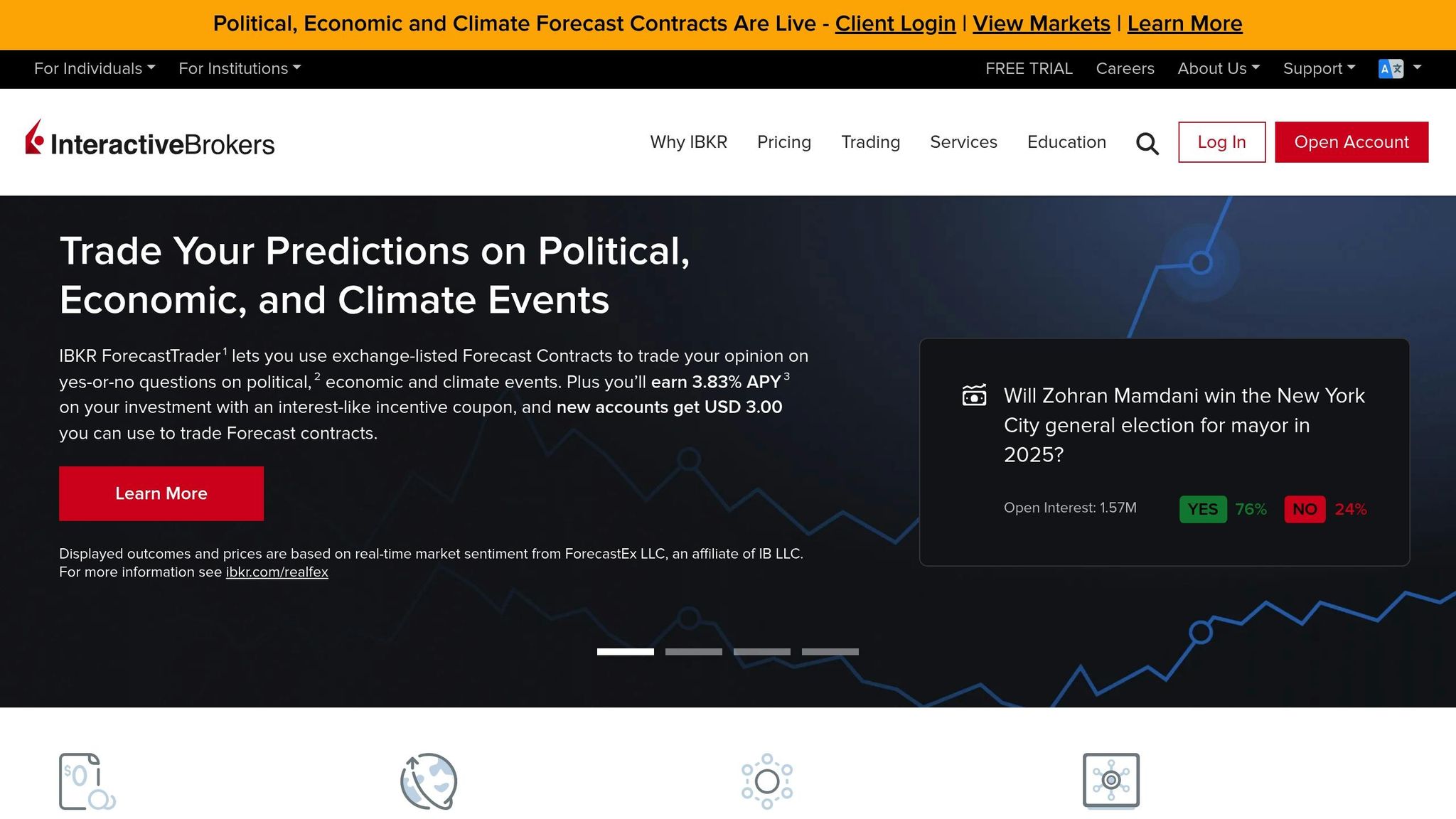
Interactive Brokers (IBKR) brings five decades of expertise in global markets to the table, offering a robust platform for futures trading. Traders can access a wide range of futures – including micro and mini contracts – spanning indices, interest rates, currencies, commodities, and even cryptocurrencies, with coverage across more than 30 exchanges worldwide. Thanks to its self-clearing structure, IBKR reduces dependence on third parties, and its strong capital position ensures a stable and reliable trading environment.
Platform Performance
Interactive Brokers offers high-performance platforms tailored to different trading styles and needs. The Trader Workstation (TWS) stands as the flagship platform, providing a comprehensive suite of tools for seasoned traders. For those newer to trading, the GlobalTrader app delivers a streamlined and user-friendly experience.
"Advanced desktop, mobile and web trading platforms offer low-latency access and best execution support from IB SmartRoutingSM." – Interactive Brokers
For traders looking to build custom strategies, IBKR supports multiple programming interfaces, including REST, Python, Java, and C++ APIs. These options, combined with real-time risk analytics and customizable alerts, make the platform particularly appealing to advanced users, especially those engaged in high-frequency trading. The integration of these features ensures a smooth and efficient trading experience.
Trading Tools
IBKR equips its users with an impressive array of trading tools. The Trader Workstation (TWS) and ComboTrader are central to the platform’s offerings. With over 90 order types and algorithms, traders can execute strategies with precision. The desktop app enhances charting capabilities, featuring more than 90 indicators and 80 drawing tools, allowing traders to act directly from their charts. This direct execution feature simplifies decision-making, especially in fast-paced markets.
For futures traders, the SpreadTrader acts as a command center within TWS, helping manage positions efficiently. The Index Arbitrage Meter is another standout tool, identifying price disparities between futures contracts and their spot prices to uncover potential opportunities. Additionally, IBKR integrates with ProRealTime‘s charting software for more advanced analysis.
To support traders’ ongoing development, IBKR offers a wealth of educational resources through IBKR Campus, including courses tailored to futures trading. This comprehensive suite of tools and resources is further enhanced by the platform’s competitive pricing structure.
Fee Structures
Interactive Brokers provides two pricing models for futures trading: tiered and fixed commissions. The tiered model rewards high-volume traders with lower rates, while the fixed model ensures predictable costs regardless of trading volume.
| Contract Volume (Monthly) | Tiered USD Futures | E-micro Futures | Bitcoin Futures | Ethereum Futures |
|---|---|---|---|---|
| ≤ 1,000 contracts | $0.85 | $0.25 | $5.00 | $3.00 |
| 1,001 – 10,000 contracts | $0.65 | $0.20 | $4.20 | $2.55 |
| 10,001 – 20,000 contracts | $0.45 | $0.15 | $3.40 | $2.10 |
| > 20,000 contracts | $0.25 | $0.10 | $2.60 | $1.65 |
For traders who prefer fixed pricing, the rate for USD-denominated futures and futures options remains at $0.85 per contract. Notably, IBKR’s commission structure excludes additional spreads, ticket charges, platform fees, or account minimums. Volume discounts are calculated based on the total monthly trade volume across all futures and futures options contracts. This transparent pricing approach makes IBKR an attractive choice for traders of all levels.
3. TradeStation
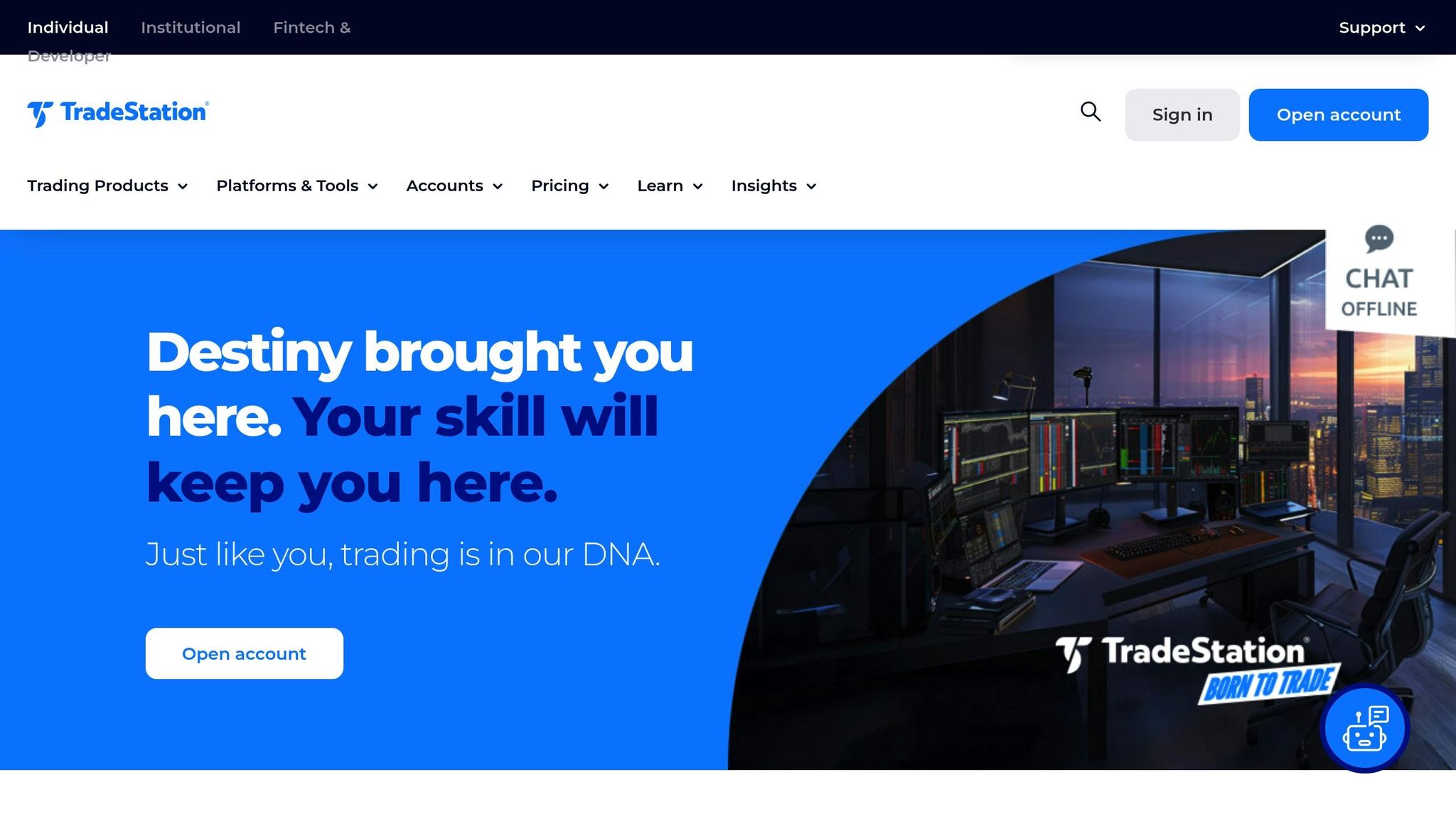
TradeStation has earned recognition as a top-tier platform, being named 2025 Best in Class by StockBrokers.com and receiving high marks for ease of use, thanks to its comprehensive trading solutions. The platform supports trading across desktop, web, mobile, and its specialized FuturesPlus platform, making it a go-to choice for active futures traders. What truly sets TradeStation apart is its advanced technology paired with one of the most extensive historical futures databases available.
"Experience the full power of TradeStation through our flagship desktop software, offering the most advanced features, the ability to code your own applications, and maximum customization." – TradeStation
Its historical futures data is particularly impressive, spanning 69 years for daily data and 36 years for intraday data, giving traders an unparalleled resource for backtesting and strategy development.
Platform Performance
TradeStation delivers consistent, high-performance functionality across its desktop, web, and mobile platforms. The desktop platform, in particular, acts as a powerful trading terminal with low-latency execution that caters specifically to the demands of futures trading. It processes real-time data seamlessly, with the RadarScreen tool capable of tracking up to 1,000 symbols at once.
"In 2025, with tighter spreads, faster execution needs, and algorithmic trading rising in popularity, TradeStation provides a high-performance environment to thrive."
The web and mobile versions of TradeStation offer streamlined, flexible trading experiences, complete with live charting and real-time alerts. These platforms are designed for traders who need to act swiftly, featuring intuitive navigation and rapid order execution. Tools like one-click and drag-and-drop trading make it easy to place and modify orders quickly, which is critical for active futures traders. The platform’s suite of tools ensures that traders have everything they need for strategic execution.
Trading Tools
TradeStation equips traders with a robust set of tools tailored for futures trading. At the core of its offerings is EasyLanguage®, a proprietary programming language that allows users to create custom programs for backtesting and automating trading strategies. This is especially useful for traders looking to develop and refine their own algorithms.
RadarScreen® serves as a dynamic market scanner, enabling users to track up to 1,000 symbols in real-time. With customizable technical and fundamental indicators, it helps traders spot opportunities across multiple markets simultaneously.
The Matrix integrates three essential features – market depth display, order-entry tool, and order-tracking system – into a single interface. This streamlines the trading process, making it easier to execute and manage trades. Additionally, the platform offers advanced charting capabilities with over 180 built-in indicators for in-depth technical analysis.
For traders specializing in futures options, FuturesPlus provides tools designed for strategy visualization and risk management. Combined with TradeStation’s extensive historical database, these tools enable comprehensive backtesting, with some futures data dating back nearly seven decades.
Fee Structures
Beyond its technical features, TradeStation boasts a transparent and competitive fee structure. Under its TS SELECT plan for U.S. residents, the platform operates on a $0 commission model with per-contract fees tailored for futures trading.
| Contract Type | Commission | Per Contract Fee |
|---|---|---|
| Standard Futures | $0 | $1.50 per side |
| Micro Futures | $0 | $0.50 per side |
| Futures Options | $0 | $0.85 per side |
New futures clients enjoy a 90-day grace period with free real-time market data, offering a valuable advantage for those just starting out. TradeStation also provides margin rates as low as 10% for select U.S. equity index futures and 10-Year Treasury futures.
Additional costs include exchange, regulatory, and overnight fees. For accounts on a tiered pricing plan, an overnight fee of $0.10 per net open futures contract applies on a per settlement date basis. High-volume traders can explore custom pricing options for even greater flexibility.
sbb-itb-24dd98f
4. Webull
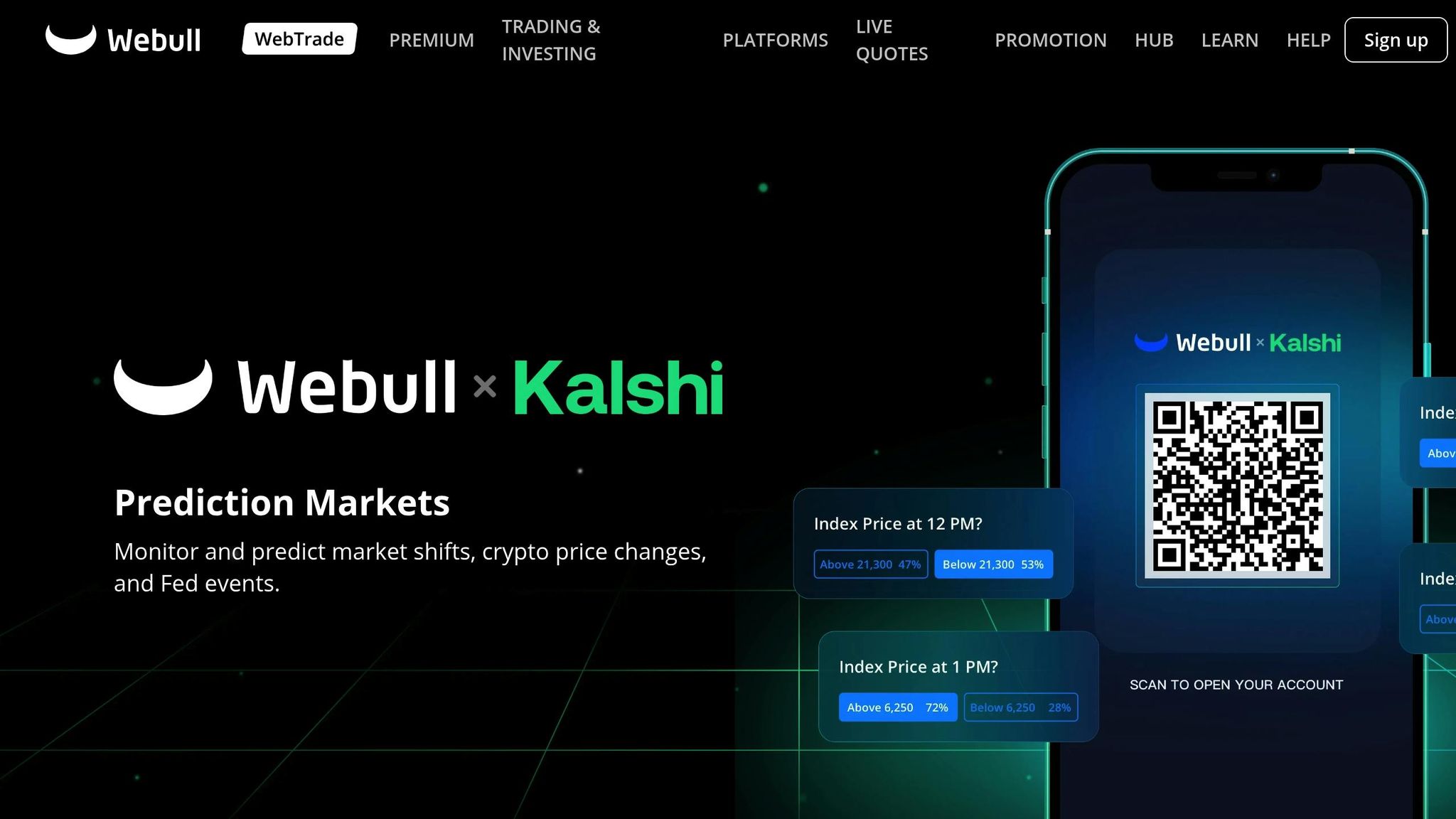
Webull has established itself as a strong player in the trading world, now serving 20 million users. It strikes a balance between a user-friendly interface and advanced trading features, making it a solid choice for both beginners and intermediate traders.
One of Webull’s standout qualities is its seamless futures trading across multiple devices. Whether you’re using the desktop platform, web version, or mobile app, the experience is consistent and efficient – a critical factor for futures trading, where timing is everything. This flexibility ensures you can monitor and execute trades no matter where you are.
Platform Performance
Webull’s platform is built for reliability and responsiveness, offering a smooth trading experience across all devices. However, some users have mentioned slower response times from customer service.
"Webull’s charting is responsive and well-equipped, featuring multiple chart types, drawing tools, and 59 technical indicators. I was able to manage orders directly from the chart, and hotkeys with grid layouts made it easy to compare multiple charts."
– Jessica Inskip, Director of Investor Research at StockBrokers.com
While customer service could improve, Webull’s trading technology holds its own. Its charting tools rival those of much larger brokers, providing traders with a dependable and feature-rich platform.
Trading Tools
Webull’s trading tools are designed to empower futures traders with a variety of advanced features. The platform includes over 50 technical indicators, multiple chart types, and drawing tools to help users make informed decisions.
Additionally, Webull offers real-time market data and Level 2 data for detailed market analysis. Traders also have access to screeners, investment analysis tools, and integrated news feeds tailored for futures trading. A standout feature is its paper trading simulator, which lets users test strategies in a risk-free environment. This is especially helpful for beginners or traders experimenting with new approaches.
"Webull is beginning to establish itself as a strong choice for beginners and intermediate traders who want access to just enough data to make informed decisions without feeling overwhelmed by a flood of information."
– Jessica Inskip, Director of Investor Research, StockBrokers.com
The mobile app adds a social dimension by integrating social media features with trading tools. Users can see which futures contracts are generating buzz, offering a fresh way to gauge market sentiment.
Fee Structures
Webull complements its platform with a transparent and competitive fee structure. Here’s a breakdown of its per-contract pricing:
| Contract Type | Fee per Contract |
|---|---|
| Regular Future Outright | $1.25 |
| Mini Outright Futures | $0.70 |
| Micro Outright Futures | $0.25 |
| Cryptocurrency Futures | $0.50 |
| Standard Crypto Futures (Coinbase) | $0.50 |
| Nano Crypto Futures (Coinbase) | $0.13 |
These rates make Webull an appealing option, especially with micro futures priced at just $0.25 per contract and E-Mini contracts at $0.70 per contract. The platform is upfront about its costs, with no hidden execution fees; however, traders should be aware of additional exchange, clearing, and regulatory fees. As a Futures Commission Merchant registered with the CFTC and a member of the National Futures Association (NFA), Webull adheres to strict regulatory standards, ensuring security and compliance for its users.
5. AMP Futures
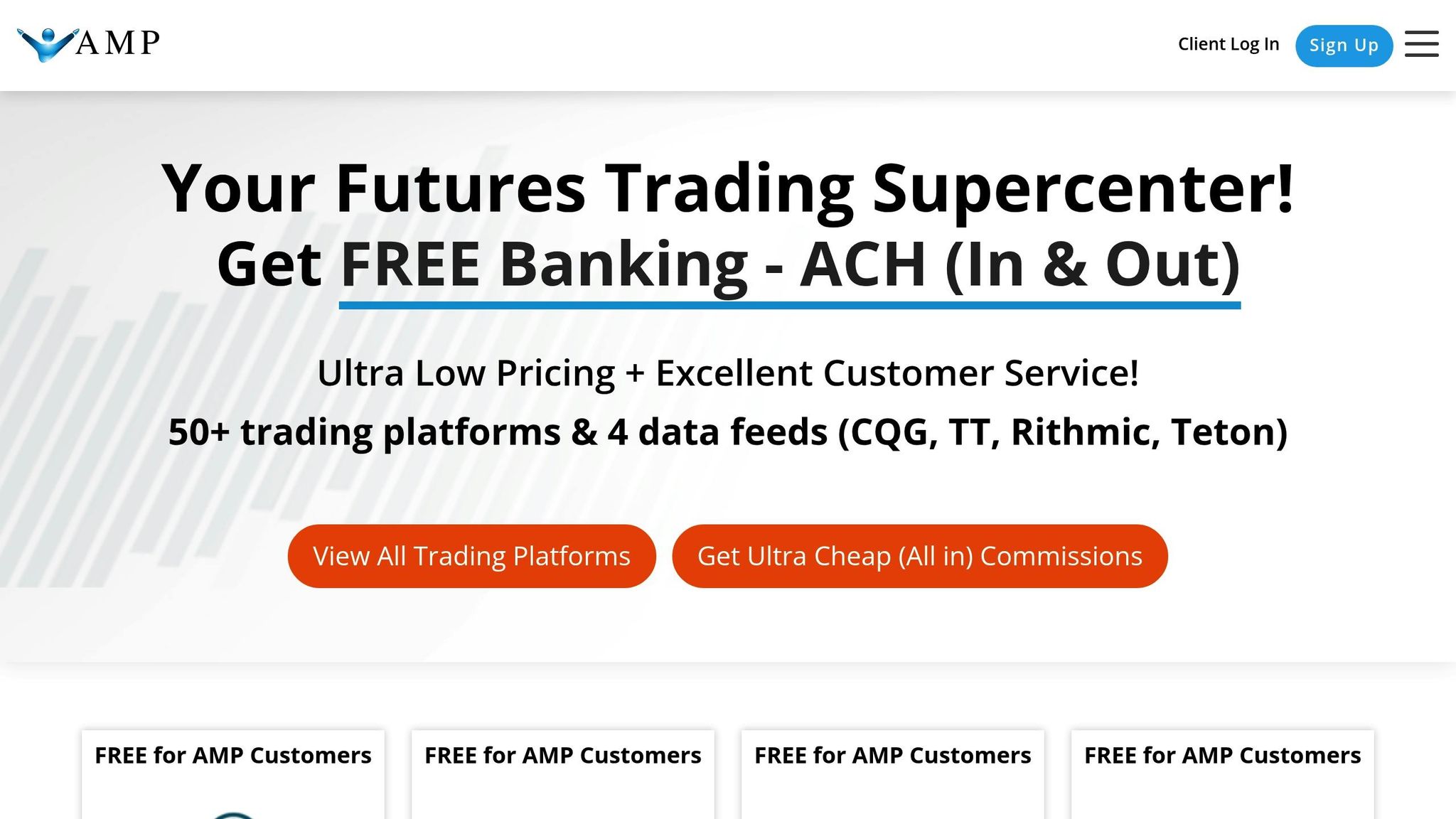
AMP Futures provides access to over 50 trading platforms, supported by multiple data feeds like CQG, TT, Rithmic, and Teton. This wide array of options has earned them recognition as the "Best Futures Broker" for both 2023 and 2024 on TradingView, based on feedback from over 50 million traders and investors.
AMP Futures emphasizes flexibility, allowing traders to select platforms that align with their individual trading styles. As the company itself states:
"The Best Trading Platform is the one YOU like best. AMP Futures offers you 50+ Trading Platforms. Compare and Choose the Best Trading Platform for YOU."
This philosophy ensures that traders can find tools tailored to their specific needs and preferences.
Platform Performance
AMP Futures is known for delivering reliable data feeds and efficient trade execution, making it a solid choice for active futures traders. Their platform ecosystem includes some of the most respected trading software in the industry, with many options available at no monthly cost. A standout feature is their partnership with Quantower, offering customers the full version of the platform with all its advanced features for free.
Additionally, they provide access to Sierra Chart, a platform celebrated for its stability, customization, and high performance. To further support traders, AMP Futures offers 24-hour customer service and trade desk support, ensuring assistance is always available during market hours. Combined, these features create a robust trading environment equipped with advanced tools and reliable performance.
Trading Tools
Through partnerships with leading platforms, AMP Futures offers an extensive toolkit for traders. TradingView provides advanced financial visualization tools for in-depth market analysis on both desktop and mobile devices. For traders focused on order flow, the ATAS Order Flow Trading platform is available, while FutureSource delivers real-time and historical global market data and analytics.
These tools enable trading across major global exchanges:
| Exchange | Coverage |
|---|---|
| CME – Chicago Mercantile Exchange | US futures and options |
| COMEX – Commodity Exchange Inc. | Precious metals |
| ICE Futures Europe (IPE) | Energy and agricultural products |
| New York Mercantile Exchange | Energy commodities |
| Eurex | European derivatives |
| Singapore Exchange | Asian markets |
| Hong Kong Futures Exchange (HKEX) | Asian equities and commodities |
This global reach allows traders to diversify across multiple markets and time zones, enhancing their ability to adapt to varying market conditions.
Fee Structures
AMP Futures offers competitive pricing, with commissions starting as low as $0.25 per contract. Traders can choose between volume-tiered and flat-rate commission structures, with a transparent fee calculator to simplify cost estimation. For example, Micro E-Mini S&P 500 contracts start at $0.44 per contract for fewer than 1,000 contracts per month and drop to $0.41 for over 10,000 contracts. Flat-rate pricing is set at $0.42 per contract.
The broker also features attractive margin requirements – $400 for S&P 500 day trading and $40 for Micro E-Mini S&P 500 – and imposes no monthly inactivity fees or volume requirements. They even pledge to beat or match any commission quote. While a CME Exchange Fee Increase was announced for February 2025, AMP Futures remains committed to maintaining competitive pricing.
Hardware Integration
AMP Futures supports a variety of platform configurations, from simple setups to advanced multi-screen trading stations. Their focus on efficient data feeds and compatibility with high-performance platforms like Sierra Chart ensures that traders with top-tier hardware can take full advantage of fast execution speeds. This seamless integration between software and hardware is critical for traders navigating today’s fast-paced markets.
Advantages and Disadvantages
This section breaks down the main pros and cons of each platform, offering a quick comparison to help you decide which works best for your trading needs.
Every platform has its strengths and limitations, and understanding these trade-offs is key to finding one that matches your trading style and technical preferences.
NinjaTrader is a standout for its customization options and educational resources, earning a 4.3/5 rating from NerdWallet, according to detailed platform reviews. It supports over 100 futures products and offers low commissions. However, most contracts require a market data subscription, and beginners may find the interface less intuitive. In 2023, NinjaTrader introduced cloud-based mobile and web platforms, enabling seamless cross-device trading, along with a custom tool for event-based futures trading.
Interactive Brokers shines with its professional-grade tools and a 4.4/5 NerdWallet rating. It features both tiered and fixed pricing options with highly competitive futures commissions. The platform grants access to a wide range of exchanges and asset classes but has a website that can be difficult to navigate, and trading permissions may feel restrictive. The broker is also known for offering some of the lowest margin rates among major platforms.
TradeStation appeals to traders with competitive intraday margin rates on select contracts, which can boost capital efficiency for short-term strategies. However, some users have reported a frustrating interface and a lack of third-party fundamental research.
Webull focuses on delivering an easy-to-use experience, earning a 4.0/5 NerdWallet rating. It provides competitive futures trading commissions and low minimum margin requirements. That said, its access is limited to the CME exchange, and the range of tradable products is smaller compared to other brokers.
AMP Futures stands out for its competitive commissions on U.S. micro e-mini stock index futures. It offers access to over 50 trading platforms and doesn’t charge monthly inactivity fees. However, the sheer variety of platforms can be overwhelming for beginners.
| Broker | Commission Range | Key Advantage | Main Disadvantage | NerdWallet Rating |
|---|---|---|---|---|
| NinjaTrader | $3.50 (micro e-mini) | 100+ futures products; customization | Market data costs; less beginner-friendly | 4.3/5 |
| Interactive Brokers | $0.25–$0.85 per contract | Lowest margin rates; global market access | Complex navigation; restrictive permissions | 4.4/5 |
| TradeStation | $1.50 per contract; $0.50 micro | Flexible intraday margins; capital efficiency | Frustrating interface; no third-party research | Not rated |
| Webull | $0.25–$1.50 per contract | User-friendly interface; low margins | CME-only access; fewer tradable products | 4.0/5 |
| AMP Futures | $1.40 per contract | Access to 50+ platforms; no inactivity fees | Too many platform options for beginners | Not rated |
For traders with advanced setups, specialized platforms can provide added speed and customization. Sierra Chart is a great choice for order flow trading, available for $36 per month. Meanwhile, R | Trader Pro by Rithmic offers lightning-fast execution speeds under 2ms but comes at a higher cost of $150+ per month. Active traders should carefully evaluate these costs, as small fee differences can add up quickly with high trading volumes.
Hardware compatibility also plays a critical role. Both Interactive Brokers and AMP Futures integrate well with advanced setups, while Webull’s CME-only focus may limit certain scalping strategies. Similarly, TradeStation’s low margin requirements appeal to short-term traders, but its interface issues could slow decision-making during volatile market conditions.
These insights aim to help you weigh the strengths and weaknesses of each platform, so you can make a choice that aligns with your trading goals.
Final Recommendations
When choosing a web-based futures trading broker for 2025, it’s important to align the platform with your trading style and the hardware you’ll be using. Different platforms are designed for specific trader profiles, and the right combination of tools and technology can make a noticeable difference in your performance. Here are some tailored suggestions based on trader types and hardware requirements:
For beginners, Interactive Brokers is a solid choice. It provides extensive educational resources and a tiered pricing model to help you manage costs while you learn the ropes. With access to global markets, it offers plenty of room for growth. To get the most out of the platform, pair it with a mid-range setup – think 32GB of RAM and dual monitors – to handle data-heavy tools without breaking the bank.
Active day traders need platforms that prioritize speed and reliability. NinjaTrader has stepped up in 2025 with new cloud-based mobile and web platforms, offering seamless cross-device functionality. For this type of trading, invest in a high-performance setup: 64GB of RAM, ultra-low latency components, and multiple monitors to keep tabs on multiple markets at once.
Professional scalpers should look into R | Trader Pro by Rithmic, known for its lightning-fast sub-2ms execution speeds. While the $150+ monthly cost may seem steep, it’s worth it for advanced traders who rely on direct market access and co-location. To support this platform, institutional-grade hardware is essential.
Cost-conscious traders might find Webull appealing due to its low commissions. However, its CME-only market access could limit certain trading strategies. For those seeking more robust tools, TradeStation is a great alternative, offering advanced charting and order types, though it comes with a steeper learning curve.
When it comes to hardware configurations, keep your platform’s demands in mind. For example, Interactive Brokers and AMP Futures integrate seamlessly with advanced multi-monitor setups, while Sierra Chart (around $36/month) is perfect for traders who need highly customizable tools for order flow analysis. Basic trading computers are sufficient for simpler platforms, but advanced platforms like NinjaTrader require more processing power to perform at their best.
If you’re trading in high volumes, even small differences in commissions can add up, so factor that into your decision. Ultimately, aligning your trading platform with the right hardware setup is key to achieving optimal performance.
FAQs
What should I look for when selecting a web-based futures trading broker in 2025?
When selecting a web-based futures trading broker in 2025, it’s crucial to consider factors like regulation, trading fees, and platform performance. These elements play a big role in keeping your investments secure, managing costs, and ensuring smooth trading operations. Additionally, take a close look at the range of markets offered to ensure they align with your trading objectives.
For those who trade actively, having access to tools like real-time data, advanced charting features, low-latency execution, and a straightforward, intuitive interface can make a significant difference. These features not only improve decision-making but also create a more efficient trading process, helping you stay ahead in fast-paced markets.
How do broker fees affect the overall trading costs for different types of futures traders?
Broker fees are a key factor in the overall trading costs for futures traders, and they can vary widely based on trading volume and strategy. High-volume traders often enjoy lower per-contract fees, typically ranging from $0.25 to $2.50. These reduced rates can make a big difference when handling a large number of trades. Some brokers sweeten the deal with volume-based discounts, which can further trim expenses for active traders.
For casual or low-volume traders, the picture looks a bit different. They often face higher costs due to flat fees, such as $2.25 per contract plus exchange fees. These fixed charges can quickly stack up, especially for those making fewer trades, potentially eating into their profits. Knowing how these fee structures work is crucial to finding a trading platform that fits your style and budget.
What kind of computer setup is best for running advanced trading platforms like NinjaTrader or Interactive Brokers?
To make the most of trading platforms like NinjaTrader or Interactive Brokers, you’ll need a high-performance computer. A good starting point is a 64-bit quad-core processor, such as an Intel Core i7 or AMD Ryzen 7, with a speed of 3.5 GHz or higher. For memory, while 8 GB of RAM is the minimum, upgrading to 16 GB or more will give you smoother multitasking, especially when running multiple tools. To handle charting features effectively, a DirectX 10-compatible graphics card is also recommended.
Switching to a solid-state drive (SSD) over a traditional hard drive can make a noticeable difference in data access speeds. And don’t overlook your internet connection – a reliable broadband connection is key for low-latency trading, ensuring real-time data updates and quick order execution.
With this setup, you’ll be better equipped to handle advanced tools and execute trades without delays, giving you a smoother and more efficient trading experience.

